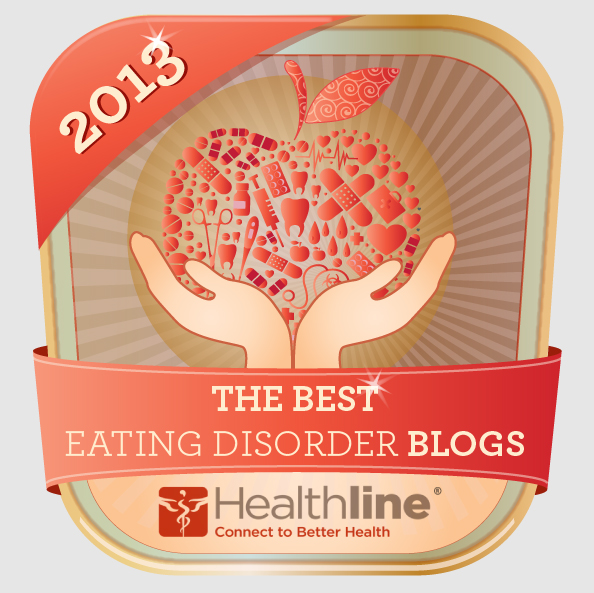When Mom Has an Eating Disorder, Everybody Suffers
parentdish.com
It's every mom's nightmare: Finding out your daughter has an eating disorder. Even worse is knowing you're probably to blame.
Teresa Coates, a 40-year-old mom and solo parent of two, was anorexic in high school. She survived on 3 Musketeers bars and not much else. After high school she continued her bizarre eating habits until one day she went into convulsions at work and was rushed to the hospital. The ER doctor told her if she ever wanted to have children, which she did, she would have to start eating.
Teresa's daughter recently turned 13 and she worries about her. A lot. "I worry genetically about my daughter because I come from a family of very heavy women. And that was a concern when she came home from the hospital. I remember being worried about that. It's a hard thing to know you're genetically predisposed to not be thin."
She does feel, however, that her daughter is off to a much better start than she was at her age. "I came from a real working-class family. We didn't eat a lot of fruits and vegetables and the vegetables we ate came from cans. My take on healthy food wasn't really there. I've been cognizant trying to teach both my kids how to tell if food is good for you. They both read labels, a lot. They eat a lot of fruit and vegetables. They're very aware that you need to drink water."
But that doesn't mean it's easy.
Read in full: When Mom Has An ED
Making Sense of ED Mortality Statistics
ANAD.org
By Kathy Chen, MA
Chicago Professional School of Psychology
The topic of eating disorders (EDs) and mortality can be particularly sensitive because of the controversial findings in the research and perhaps their implications. The common belief appears to be that EDs, especially anorexia nervosa (AN), are associated with a low rate of survival. Many factors influence the results of research regarding EDs and mortality; yet, the more confusing point seems to be the ways in which these results are recorded. Therefore, reviewing the research and examining the methods that lead to a study’s results could provide mental health professionals as well as friends and families with a more in-depth understanding of the relationship between mortality and EDs.
The first step to understanding the relationship between mortality and EDs is to study the specific parts of information presented in the research. First, there are multiple definitions used to determine the rate of death in EDs (Neumärker, 2000). For instance, the term “mortality rate” is different from the term, “standardized mortality ratio.” The mortality rate is usually expressed as the number of deaths per 100,000 of the population, whereas the standardized mortality ratio (SMR) is the number of observed deaths divided by the number of expected deaths in a specific population. In addition, when authors write of mortality rate, they usually refer to the crude mortality rate, which includes the number of deaths out of the total number of people studied during a specific amount of time. Let me give you a simple example. Let’s imagine we are researchers who have 100 people in our study. If we check back with these people in 10 years and find that 5 of them have passed away, then the crude mortality rate would be 5 percent. To calculate the SMR, let’s again think of a simple example. We are researchers who have 100 people in our study. This time these 100 people are adolescent females with AN. We observe that 50 of them have died within a certain amount of time. However, let’s say that the expected number of deaths for adolescent females without an ED is 10. Therefore, the SMR in this hypothetical example would be 5. This result means that the sample of adolescent females with AN has a level of mortality that is 5 times greater than the average adolescent female population without an ED. Though these terms may seem similar, they can nonetheless impact the ways in which readers interpret these results. Thus, when one reads research findings, one would likely want to be aware of the different ways that mortality is measured for the purpose of having a more comprehensive understanding of the research findings.
Read in full: Making Sense of ED Mortality Statistics
Binging to Lose the Bulge: The Dangers of Drunkorexia
richlandchronicle.com
The disorder ‘anorexia' isn't a new one, but the dangerous eating disorder has now found a new partner. Drunkorexia is a new slang term used to describe people who don't eat in order to save the calories for their alcoholic beverages later.
Although it's not an official medical term, drunkorexia is starting to become widely known across college campuses. College students seem to be the main target, and narrowing it down further, female college students.
The restriction of food in order to binge on drinking is the same concept as other deadly eating disorders including bulimia.
During an interview with ABC News, Savannah, a 22-year-old graduate from the University of Texas talked about her experience being a proclaimed ‘drunkorexic'.
"It was just something I always did while in college as a normal part of my diet so that I could stay skinny but still go out and drink," Savannah said. "I do know a lot of people who skip meals to drink, drink heavily and don't gain any weight. Obviously, their success in this way encourages others to try it. I've done [drunkorexia] for years and I'm still healthy. I'm still skinny."
Read in full: The Dangers of Drunkorexia























0 comments:
Post a Comment